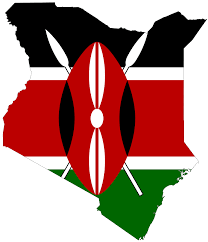File:Kenya map.png
Kenya_map.png (208 × 242 pixels, file size: 5 KB, MIME type: image/png)
By Abdulkarim Taraja
With the menace and political gimmicks surrounding Independent Electoral and Boundaries Commission (IEBC) continue biting our minds, the dialogue as presumed by many other Bi-partisan groups should be seriously considered.
However, the dialogue should be in the confines of the law and each sides being in the compromising positions if at all they want to liberate this country from falling apart as witnessed 8 years ago.
As I witness day to day battles and hard lines by the Jubilee Coalition and the Coalition for Reforms and Democracy (CORD) while setting unbearable conditions, better solutions to the saga is just but a distant fantasy if we continue trading this path.
As I scribe this, I am a beneficiary of the Structured Democratic Dialogue Process (SDDP) that we underwent recently in Nairobi during the Reinventing Democracy in the Digital Era Co-Laboratory event where the process leads the stakeholders to amicable solutions without these standoffs.
The methodology supports the generation of truly democratic and structured dialogue amongst teams of stakeholders. It is particularly effective in the resolution of complex conflicts, interests, and values, and in achieving consensus based on a common understanding and strategy. It is based on 7 complex systems and cybernetics axioms, and has been grounded both scientifically and empirically in hundreds of settings on a global scale for the past 30 years.
SDDP was designed especially so that it can assist non-homogenous groups in tackling complex problems within a reasonable and restricted time frame. It facilitates the annexation of contributions by individuals with vastly different views, contexts, and aspirations, through a process that is structured, conclusive, and the product of cooperation.
A team of participants, who are knowledgeable of a particular situation, generate together a common outline of ideas based on a common understanding of the current problematic situation and a future ideal one. SDDP promotes the focused communication between participants and supports their ownership of the solution as well as their actions towards implementing it.
As we meddle with the issue of IEBC, I would like to support the parliamentary system of dialogue that will use the SDDP in its dialogue. In this process, the firm standoff we are witnessing here will be neutralized even without the stakeholders knowing it. SDDP is self-documenting software as the dialogue process continues.
The process of a typical SDDP session works in phases that those who will conduct the process ought to: First, the breadth of the dialogue is constrained and sharpened with the help of a Triggering Question. This is formulated by a core group of people, who are the Knowledge Management Team (KMT) and is composed by the owners of the complex problem and SDDP experts. This question can be emailed to all participants, who are requested to respond with at least three contributions before the meeting either through email or wikis.
Second, all contributions and responses to the triggering question are recorded in the Cogniscope IITM software. They must be short and concise: one idea in one sentence! The authors may clarify their ideas in a few additional sentences.
Third, the ideas are clustered into categories based on similarities and common attributes. Forth, all participants get five votes and are asked to choose ideas that are most important to them. Only ideas that receive votes go to the next and most important phase.
Fifth, in this phase, participants are asked to explore influences of one idea on another. They are asked to decide whether solving one problem will make solving another problem easier. If the answer is a great majority an influence is established on the map of ideas. The way to read that influence is that items at the bottom are root causes (if what is being discussed are obstacles), or most influential factors (if what is being discussed are descriptors of an ideal situation or actions to take). Those root factors must be given priority.
Sixth, using the root factors, stakeholders develop an efficient strategy and come up with a road map to implement it.
The process is gaining significant use in Europe, America and Asia and South Africa is the only African nation that adopting in solving complex issues such the IEBC saga. If the Kenya elites want to solve and lead democratic outcomes in the issues affecting the governance, there is no choice but to use this process.
End
The writer is a youth and co-participant of the Reinventing Democracy in the Digital Era, African Initiative and Global member and a graduate of the SDDP.
File history
Click on a date/time to view the file as it appeared at that time.
| Date/Time | Thumbnail | Dimensions | User | Comment | |
|---|---|---|---|---|---|
| current | 03:13, 27 June 2016 |  | 208 × 242 (5 KB) | Abdulkarim Taraja (talk | contribs) | By Abdulkarim Taraja With the menace and political gimmicks surrounding Independent Electoral and Boundaries Commission (IEBC) continue biting our minds, the dialogue as presumed by many other Bi-partisan groups should be seriously considered. Howeve... |
You cannot overwrite this file.
File usage
There are no pages that use this file.
